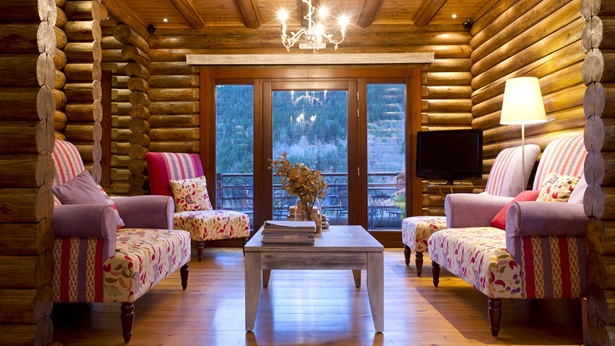Authentic Log Homes
Look for Authenticity from Members of the Log and Timber Homes Council
If you’re looking for authenticity, look no farther than the members of the Log and Timber Homes Council of the National Association of Home Builders, which sponsors this website. The Log and Timber Homes Council requires all member companies adhere to a strict code of ethics, grade logs using a third-party service, furnish builders with a construction manual and contribute to scientific research to advance log building technologies.
So what are your choices as a consumer? The difference is in how the shell of the home is constructed and how each log is crafted. Members of the Log and Timber Homes Council can offer some or all of these options, depending on the market niche they target. Here’s a look at how a renewable resource (trees) are turned into a cozy home.
Different Log Species
There are more than 17 common tree species used in the log and timber home industry, each with its own unique properties — grain pattern, color, size (diameter and length), thermal performance and resistance to decay.
Different Log Corner Styles and Profiles
Logs can be fashioned into a host of different corner styles and profiles, using different fastening and sealant systems. As you shop for your log and timber home producer, you will likely discover one style you find more appealing than others.
Different Log Styles
Here’s how to tell the styles apart:
- Milled Logs: This is how the vast majority of log and timber homes are constructed today, accounting for a full 90% of the market. Often using high-tech and modern milling systems, logs are shaped to a specific profile (D-log, round log, etc.) and precut to fit a particular home design. Identify these by the uniform diameters on the corner profiles.
- Handcrafted Logs: These custom homes account for 10% of all log and timber homes constructed annually. Detect these by noticing larger logs with varying diameters at corners or a hand-hewn appearance.
- Half-Log: This log siding is applied over conventional 2-by-4 or 2-by-6 framing. To maintain the illusion of full log, the corners sections can be full log. Log siding is often used for second story applications or for garages or outbuildings.
- Timber Frame: Also known as post and beam, this style includes large horizontal or vertical beams on the interior. Beams can either be handcrafted or milled.
Combination of Styles
Sometimes home buyers combine different styles of construction, including full log, log siding and post and beam or timbers in the great room. Stone and board and batten are also popular additions to the rustic feel of log construction.
There’s a System to This Form of Construction
Today’s modern log and timber homes involve a “building system,” combining engineering principles with specific crafting, sealing and fastening techniques for a specific tree species. Ask members of the Log and Timber Homes Council to explain how their building system will benefit you during the buying, building and longtime ownership of the home.



